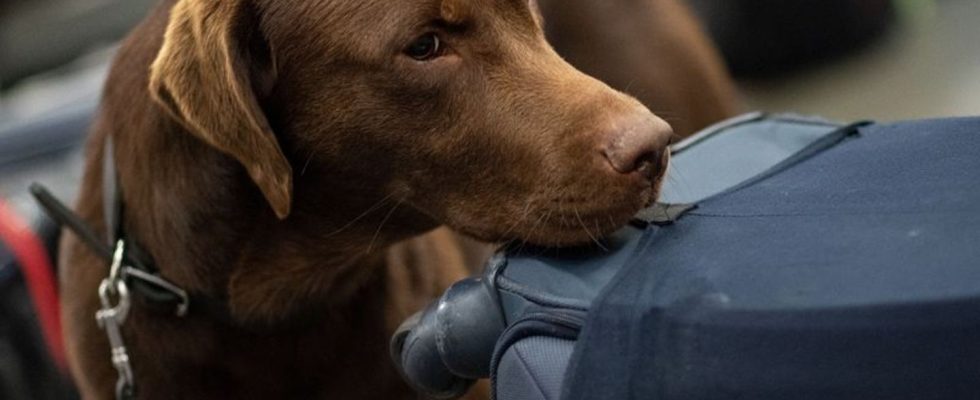World Dog Day
Dogs and humans: Was the dog’s nose a connecting element?
A drug detection dog sniffs suitcases during a customs luggage check at Cologne/Bonn Airport. photo
© Marius Becker/dpa
Dogs and people have lived together for thousands of years. The reasons for the early domestication of four-legged friends have been researched for a long time. A dog researcher has a lead.
It is often said that dogs are man’s best friend. And in fact, both have had a close connection with each other for a long time. When and why exactly domestication and ultimately long-term friendship occurred has not yet been conclusively clarified. Juliane Bräuer, research group leader Dog studies at the Max Planck Institute for Geoanthropology, has a theory: “My theory is that their nose played a big role.”
To do this, we need to take a look at the beginnings: There are different estimates as to how long humans and dogs have been living together. Bräuer assumes it is around 30,000 years old. Like other researchers, she cannot say with 100 percent certainty what exactly led to this, but: “Obviously we fit together in terms of social structure. But something must have made us successful together.”
The expert suspects that hunting most likely played a big role – and that’s where the dog’s nose comes into play. “Where the dog is clearly superior, of course, is the sense of smell.” While humans are not particularly good at consciously processing smells, around a fifth of the brain in dogs is solely responsible for the sense of smell. “When he follows a trail, he has a precise image in his head of what must be at the end of the trail.” According to the researcher, in tests in which a track was laid out but there was something else at the destination, the four-legged friends continued to search.
The sense of smell and a sense of time
According to the British science journalist Ed Yong, dogs even have a different sense of time thanks to their fine noses: While humans mainly perceive their environment in real time through their eyes and ears through the speed of light and sound, dogs can also sense the immediate past and future through their sense of smell read.
Because after a living thing has already left a place, its molecules can stay behind for a long time. Or even blow ahead. For example, dogs could anticipate the arrival of their owner. Or even estimate how long he’s been gone – depending on how intensely you still smell him.
Humans took advantage of dogs’ phenomenal noses for hunting early on: dogs and their wolfish ancestors showed the way to prey, according to the common assumption. And to this day we benefit from our four-legged friends’ sense of smell. For example with the police, where sniffer dogs help search for people, drugs, explosives, cash or data carriers. Dogs are even sometimes used in medicine because they can sniff out diseases. The corona pandemic showed that dogs can sniff out people infected with corona.
Humans and dogs as social partners
But of course it is more than just the nose that binds two-legged and four-legged friends together to this day. Not only did humans choose dogs, but dogs also chose humans as a kind of social partner, says Bräuer from the Max Planck Institute. There is no other animal with such an intimate relationship.
According to Bräuer’s findings, several factors are crucial for this: It has to be a social animal. “Cats, for example, sometimes go out there,” says the researcher. In addition, the animal must be subordinate and not be dangerous, which – in most cases – applies to dogs. “Obviously we also fit together in terms of social structure.”
Dogs generally have a very positive attitude towards people. They would enjoy working and playing together, not just with treats in return. “I think that’s what sets them apart from other pets.” People have been living with goats for a long time, for example, “but a goat wouldn’t choose us as a social partner.”

